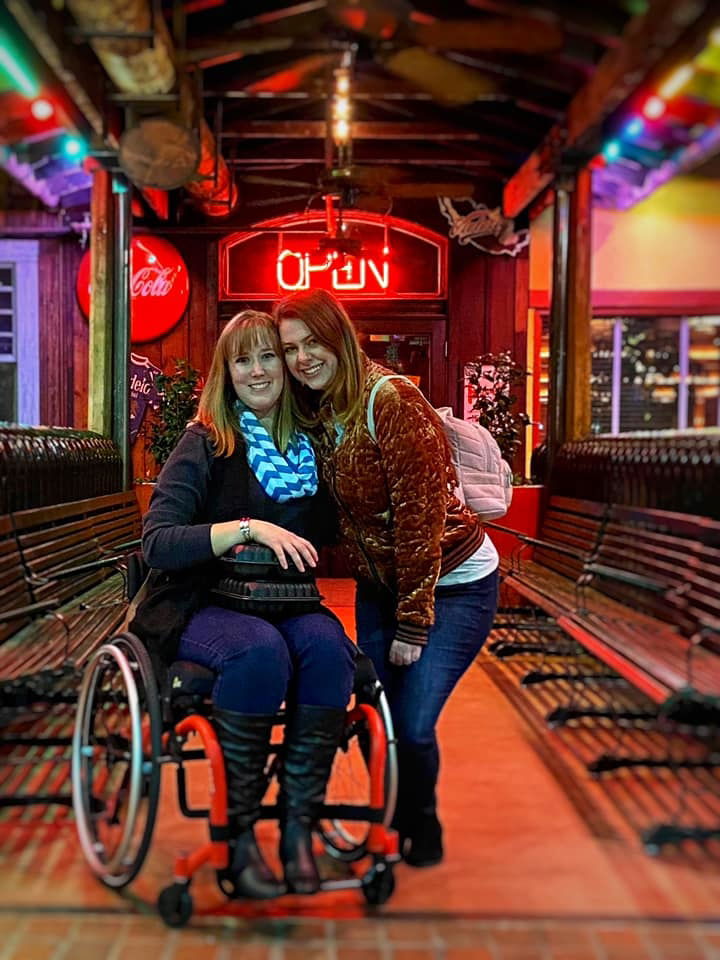The POTS Experience
What is POTS?
If you’ve been following my blog, then you’re probably aware that I have the diagnosis but you may not know exactly what all POTS encompasses. Here’s a crash course in POTS. POTS stands for Positional Orthostatic Techycardic Syndrome. It is an issue with autonomic nervous system dysfunction. It’s like your auto-pilot(controls breathing, digestion, blood flood, etc.) doesn’t work correctly. It can cause: dizziness, light headed feelings, heart palpitations, fainting, fatigue, blood pooling, digestive issues and more!
Dysautonomia International and https://my.clevelandclinic.org/health/diseases/16560-postural-orthostatic-tachycardia-syndrome-pots are great resources to learn more!
My History as a POTSie
Since the first doctor that raised the POTS alarm in 2009, I have seen 8 specialists on my journey to regain control. I’ve had countless EKGs, echos, stress tests, ultrasounds, gastric studies, sleep studies, and tilt table tests on the journey healing.
For me, POTS started as a condition directly tied to my migraines. I would get dizzy and nauseous just before a bad migraine would set it. Gradually the symptoms worsened.
I was 17 years old when I first started to faint. When I woke up from my first fainting episode, the migraine landed on me like the anvil on Wile E Coyote. This was also my first time being in a migraine cycle(status migrainosus). That migraine lasted for 93 straight days.
Over the years since then, my fainting episodes increased in frequency. The all time high was when I was averaging 4 episodes a day. It was brutal, and resulted in a lot of bruising, injured joints, and concussions over the months before we found the medication that had triggered the increase in symptoms. By the time we found it, it had wreaked havoc on my body’s systems. This was in 2014, and my body has never fully recovered.
After 2014, I gained more symptoms: blood pooling in my legs, digestive issues, fatigue, and heart palpitations in addition to my fainting episodes. I saw my primary care provider, a board certified headache specialist, four separate cardiologists, two electrocardiologists, and two neurologists over the 6 years since my POTS went from being mild to severe in 2014. Up until 2018, every cardiologist I had seen had said that “there’s nothing more [they] can do for [me]”.
Those doctors tried a myriad of treatments including: exercise regimens, dietary changes, increased fluids, and medication. When each treatment failed, the protocol of tests were re-run. I would get a new tilt table, ultra sound, etc., and my POTS would be re-confirmed. Finally, I was put on fluids 3X per week and put in a wheelchair.
The challenging reality about this journey to a more healthy life is that there is not many specialists that understand POTS as a condition. Add to that the dizzying array of symptoms that seem to cross over into multiple specialties and medical providers, and you get a complicated journey. That being said, my recent experience at Cleveland Clinic has me hopeful that we’re getting onto the right path for management of this debilitating condition.

Cleveland Clinic - Fall 2019
My first journey to Cleveland Clinic was a whirlwind. It was four days of medical appointments and extensive testing. My testing included: 16 vials of bloodwork, an EKG, an echo, a tilt table test, hemodynamic tilt table and cardiogram, a QSART test, and a series of skin biopsies. It was exhausting.
The book ends of my visit were a new patient appointment with my new POTS specialist at Cleveland Clinic and a Shared Medical Appointment with fellow POTS patients and their family members. My new patient appointment included more than 90 pages of medical records and a detailed history reviewed by my doctor, a physical examination, and ordering testing. It took about one and a half hours to complete the appointment. My doctor was patient, asked good questions, and was incredibly reassuring that the Cleveland Clinic would not give up on my complex case as so many other health care providers have done. My Shared Medical Appointment gave me the opportunity to learn from and embrace other POTSies in the community. It included presentations on POTS, breathing, meditation techniques, exercise techniques, and exercises on how to talk with relatives and friends.
Cleveland Clinic - Treatment Begins
In the weeks following my appointment, my provider worked with my local doctors to ensure that I could get consistent functional care when I got home. He is helping me to facilitate the roster of doctors that I will need to manage my condition. He is also taking the mantle to fight with the insurance company to ensure that I get access to the medications and services that I need.
Although the testing was extensive, our hope is that the results will guide this new healthcare provider in finding the right solutions for me. After my first appointment, I began a new POTS regimen that I had to stop after 4 weeks due to side effects. It was disappointing, but Cleveland Clinic demonstrated their perseverance in care while I was struggling. They took me off the regimen and made recommendations to help me re-stablize while I waited for my next appointment.
My follow-up appointment was a rousing success! The team met with me online so that I didn’t have to travel the 1200 miles across the country to see my doctor. He assessed my current needs, helped to create a new regimen, and reminded me that he wasn’t going to give up on my case.
Current Status
We don’t have the right combination yet to alleviate my POTS symptoms, but we’re hopeful that we will find the right answers.
If you’re looking for the right doctor for you, I hope you’ll search high and low. I encourage you not to give up, and to keep searching. Find a provider who says things like “I understand” and “I won’t give up on you”.
I can’t wait to share more updates with all of you.
